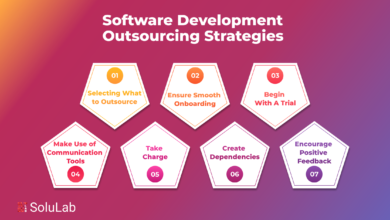Kroger Albertsons Merger: A Game-Changing Move in the Grocery Industry

The Kroger Albertsons merger represents a monumental shift in the landscape of the American grocery industry. This strategic consolidation, one of the most significant in recent history, not only reshapes the market dynamics but also sets a new precedent for future mergers and acquisitions. In this comprehensive analysis, we will explore various facets of the Kroger Albertsons merger, delving into its motivations, the challenges it faces, its potential impact on the market and consumers, and the broader implications for the grocery industry.
Background and Rationale for the Merger
To fully appreciate the significance of the Kroger Albertsons merger, it’s crucial to understand the background of these two grocery giants. Kroger, founded in 1883, has grown to become one of the largest supermarket chains in the United States. Albertsons, with a history dating back to 1939, has also established itself as a key player in the industry. The decision to merge did not occur in a vacuum; it was influenced by a rapidly evolving retail landscape marked by increasing competition from online retailers, changing consumer behaviors, and a pressing need for technological advancement in retail operations.
The primary rationale behind this merger is the creation of synergies that can drive efficiency, reduce costs, and enhance the customer experience. By combining resources, Kroger and Albertsons aim to leverage economies of scale, streamline supply chains, and invest more effectively in technology and infrastructure. This merger is also seen as a strategic move to combat the growing competition from non-traditional grocery retailers like Amazon and Walmart, which have been making significant inroads into the grocery sector.
Navigating Regulatory and Competitive Challenges
One of the most significant hurdles facing the Kroger Albertsons merger is regulatory approval. Mergers of this magnitude inevitably attract scrutiny from regulatory bodies like the Federal Trade Commission (FTC), concerned with maintaining fair competition and preventing monopolistic practices. The primary concern is that the merger could lead to reduced competition, higher prices for consumers, and potential job losses. Kroger and Albertsons must demonstrate that their consolidation will not adversely affect competition and consumer interests.
In addition to regulatory challenges, the merged entity will have to navigate a highly competitive landscape. The consolidation will give them a larger footprint and possibly greater bargaining power with suppliers. However, they will still face intense competition from other large grocery chains, discount stores, and the growing influence of online retail platforms. Maintaining competitive prices, high-quality products, and excellent customer service will be crucial for the success of the merged entity.
Impact on the Market and Consumers
The Kroger Albertsons merger is expected to have a significant impact on the market and consumers. One of the anticipated benefits is improved operational efficiency, which could lead to more competitive pricing for consumers. The combined entity’s increased purchasing power and supply chain optimization might result in lower prices for various products.
However, there are concerns about the potential negative impacts, particularly in areas where Kroger and Albertsons were previously direct competitors. Reduced competition in these regions could lead to higher prices and fewer choices for consumers. Furthermore, there are apprehensions about the impact on employment, as mergers often lead to restructuring and consolidation of operations.
Future Outlook and Industry Implications
The Kroger Albertsons merger is not just a transformation for the companies involved but also a significant event for the entire grocery industry. It signals a trend towards consolidation in an industry traditionally characterized by high competition and low margins. This merger could spur other companies to consider similar consolidations to remain competitive.
From a strategic perspective, the merger highlights the importance of scale and efficiency in the modern grocery industry. It underscores the need for traditional retailers to adapt to a changing landscape, where online shopping, delivery services, and technological innovations are increasingly shaping consumer preferences.
Conclusion
The Kroger Albertsons merger is a landmark event in the U.S. grocery industry, symbolizing a shift towards consolidation in response to changing market dynamics. While it presents opportunities for operational efficiencies and competitive positioning, it also poses challenges in terms of regulatory approval and potential market impacts. As the companies navigate these challenges, the industry as a whole will be watching closely, for this merger could set the tone for future developments in the grocery sector. Ultimately, the success of this merger will be measured not just by its impact on Kroger and Albertsons but also by its effects on consumers, employees, and the competitive landscape of the American grocery market.



